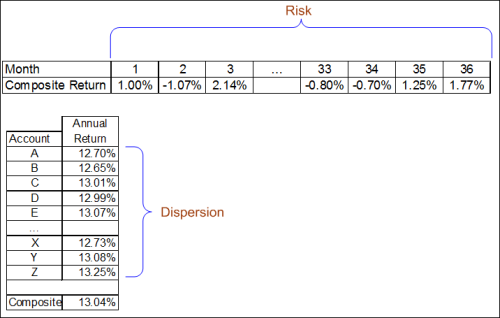I had two philosophy courses at Temple University in Philadelphia, where I obtained my bachelor’s degree: logic (which, as a math major, I was required to take) and an introductory course. Well, that’s been more than 40 years ago (I know that’s shocking, since I look so young), and so, I decided to take a course, offered by the Teaching Company: “Great Minds of the Western Intellectual Tradition.” I purchased it through Audible.com, which is the source for almost all my audio books and materials. I’m nearly done, and have enjoyed it quite a lot.
Structuralism, and how it applies to the GIPS Standards
One topic that I found extremely fascinating is on “structuralism,” which is a more modern school. The lecturer, Prof. Louis Markos of Houston Baptist University, did a masterful job discussing its concepts and application. I particularly liked terms that are attributable to Ferdinand de Saussure, a linguist. There are two ways to look at things, synchronically and diacrhonically.
My favorite (and frequently referenced) online dictionary defines these terms as follows:
- Diachronically: of or relating to the changes in a linguistic system between successive points in time; historical: diachronic analysis
- Synchronically: having reference to the facts of a linguistic system as it exists at one point in time without reference to its history: synchronic analysis; synchronic dialectology.
Dr. Markos explained that diachronic analysis is “concerned with the evolution, through time, of the structure. How the systems change from era to era.” We can look at this as a “horizontal” view. Synchronic analysis is “vertical,” and looks at “how each interacts with the existing structure…freezing the structure to see how each interacts.”
These terms actually deal with linguistics and how one would analyze what is written (for example, Dr. Markos analyzes four stories from the book of Genesis synchronically and diachronically, to demonstrate the differences). Fortunately, we can apply these terms to what we do, too.
Applying Sassure’s ideas to the GIPS Standards
Since their introduction in 1999, GIPS® (Global Investment Performance Standards) has required compliant firms to report a measure of dispersion (just as the AIMR-PPS® did), and the most common approach is via standard deviation. GIPS’ 2010 version introduced a requirement for compliant firms to report a 36-month, ex post, annualized standard deviation, as a proxy for risk. Many found this confusing, since they were using the same statistic (standard deviation) to do two different things.
As a way to help clarify the differences, I created the following schematic:
I’ve contrasted the approaches as follows:
- Standard deviation as a measure of dispersion is within time; that is, we measure the standard deviation of the composite’s portfolio annual returns for a given year
- Standard deviation as a measure of risk is across time, specifically the composite’s returns across 36 months.
I’ve come to believe that Sassure’s terms are both more elegant and accurate.
- Standard deviation as a measure of dispersion is done synchronically, within a specific time period [please note that this has coincidentally been vertically]
- Standard deviation as a measure of risk is done diachronically, across time [and please note that this has coincidentally been shown horizontally].
These measure provide a form of analysis, or at least tools to do analysis on the composite. Thus, the application of these linguistic or philosophical terms is quite appropriate.
Prof. Markos says that most people approach things diachronically, while structuralists tend to use synchronic analysis.
Does this make sense? What do you think?
I’ll have more to say in this month’s newsletters.

